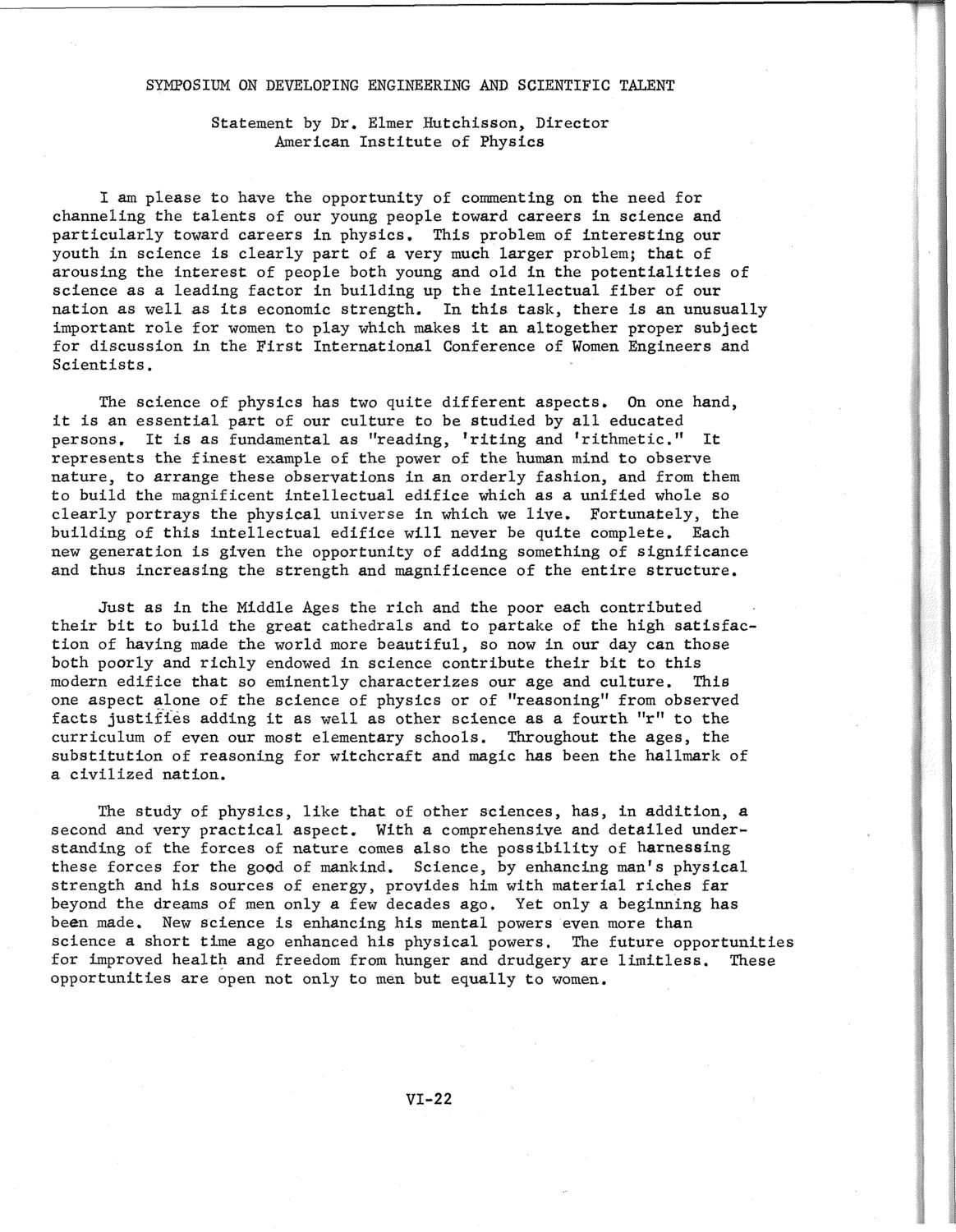| |
| |
Caption: SWE - Proceedings of the First International Conference of Women Engineers and Scientists
This is a reduced-resolution page image for fast online browsing.

EXTRACTED TEXT FROM PAGE:
SYMPOSIUM ON DEVELOPING ENGINEERING AND SCIENTIFIC TALENT Statement by Dr. Elmer Hutchisson, Director American Institute of Physics I am please to have the opportunity of commenting on the need for channeling the talents of our young people toward careers in science and particularly toward careers in physics. This problem of interesting our youth in science is clearly part of a very much larger problem; that of arousing the interest of people both young and old in the potentialities of science as a leading factor in building up the intellectual fiber of our nation as well as its economic strength. In this task, there is an unusually important role for women to play which makes it an altogether proper subject for discussion in the First International Conference of Women Engineers and Scientists. The science of physics has two quite different aspects. On one hand, it is an essential part of our culture to be studied by all educated persons. It is as fundamental as "reading, 'riting and 'rithmetic." It represents the finest example of the power of the human mind to observe nature, to arrange these observations in an orderly fashion, and from them to build the magnificent intellectual edifice which as a unified whole so clearly portrays the physical universe in which we live. Fortunately, the building of this intellectual edifice will never be quite complete. Each new generation is given the opportunity of adding something of significance and thus increasing the strength and magnificence of the entire structure. Just as in the Middle Ages the rich and the poor each contributed their bit to build the great cathedrals and to partake of the high satisfaction of having made the world more beautiful, so now in our day can those both poorly and richly endowed in science contribute their bit to this modern edifice that so eminently characterizes our age and culture. This one aspect alone of the science of physics or of "reasoning" from observed facts justifies adding it as well as other science as a fourth "r" to the curriculum of even our most elementary schools. Throughout the ages, the substitution of reasoning for witchcraft and magic has been the hallmark of a civilized nation. The study of physics, like that of other sciences, has, in addition, a second and very practical aspect. With a comprehensive and detailed understanding of the forces of nature comes also the possibility of harnessing these forces for the good of mankind. Science, by enhancing man's physical strength and his sources of energy, provides him with material riches far beyond the dreams of men only a few decades ago. Yet only a beginning has been made. New science is enhancing his mental powers even more than science a short time ago enhanced his physical powers. The future opportunities for improved health and freedom from hunger and drudgery are limitless. These opportunities are open not only to men but equally to women. VI-22
| |